
Every bowler has humble beginnings, and I'm no exception. When I started bowling, I bowled all my games, despite the shot and regardless of the lane conditions, with one ball. Odds are, if you're a beginner or novice bowler, you're bowling with one bowling ball too.
But what was everyone doing? The pros and most bowlers carried multiple bowling bags with balls. At first, it may seem a little ridiculous, but then you'll realize one bowling ball doesn't fit all lane conditions.
There might be something behind playing with different balls. But how many balls do you need exactly, you may ask? We want to help you avoid creating your arsenal the wrong way. That's what we'll address in this article.
Contents
- 1 How Many Bowling Balls Do You Need?
- 2 Why Not Start with 5 Balls Like the Pros?
- 3 Mastery of the Game
- 4 Why Do Bowlers Use More Than One Ball?
- 5 What Bowling Balls Do I Need? And Why?
- 6 Know Your Coverstock Options
- 7 How to Build Your Bowling Ball Arsenal?
- 8 Do You Need Both a Symmetrical and Asymmetrical Ball?
- 9 Consider Your Budget
- 10 Frequently Asked Questions
How Many Bowling Balls Do You Need?
If you only bowl casually, a single all-purpose ball may suffice, but if you're serious about the sport, at a minimum, we recommend starting with at least two balls bowling balls. Two ball options will help you get the most out of your invested time and money, and improve your experience.
Every bowling ball is designed with specific characteristics, such as different coverstock materials, core shapes, and weight distributions. These variations allow bowlers to adapt to different bowling lane conditions and target specific pin reactions.
So, how many bowling balls do you need? Professional bowlers usually carry 5 bowling balls, but if you're just getting into playing the sport on a serious basis, you probably won't need quite so many.
Why Not Start with 5 Balls Like the Pros?
It's important to note, the pros use more than one ball for various reasons. It's easy for many bowlers to think that they need to go out and purchase 5 balls to be like the pros. But it's important to know their why and that experimentation and skill development with limited choices plays a crucial role in the growth and progress of any bowler. While it may be tempting to get your hands on a wide range of bowling balls right from the start, there are significant benefits to working with just one ball fewer to start.
Mastery of the Game
When you have only a few bowling balls at your disposal, you are forced to focus on mastering their nuances. Each ball you throw has its own unique characteristics, and by limiting your options, you can dedicate more time and effort to understanding and perfecting your technique with those specific balls. This focused approach to play helps you develop a deeper understanding of ball motion, entry angles, and adjustments, ultimately improving your overall skill set.
In addition to that, having fewer bowling balls to throw also encourages you to become a better problem solver on the lanes. With limited throwing options, you are compelled to think critically and creatively about how to make shots and navigate challenging situations. You learn to make strategic adjustments and experiment with ball speed, loft, and hand positions to achieve the desired ball reaction. This problem-solving process fosters analytical thinking and enhances your ability to make quick and effective decisions during a game.
Why Do Bowlers Use More Than One Ball?
By now, you probably realize there is more to bowling than rolling any ole ball down a lane and PRAYING for a strike. There is actual science to the strikes. Part of the science is understanding all bowling balls aren't created equally.
Lastly, bowling lanes are oily or waxy, and the different balls react differently to how the oil is put on the lanes because bowling balls react differently to wet and dry lanes (oil patterns) and long and short length patterns.
What Bowling Balls Do I Need? And Why?
When it comes time to choose your bowling balls, remember that there are two main types - symmetrical and asymmetrical. These terms refer to the core designs within the ball and have a significant impact on its overall performance. Let's explore symmetrical and asymmetrical bowling balls in more detail:
A Bowling Ball That Hook
Your first goal in bowling is to strike on the first roll of each frame. So you need to roll a ball that has the most hook potential that you can aim and control.
Balls with slight hook potential are typically made from harder material like urethane. Their inner cores and coverstock are designed to slide easily on the lane and create a lot of speed, and the potential to hook, once it's out of the oil.
These balls tend to be a bit more expensive but are less likely to veer off the lane when thrown properly and increasing your chance to strike.
Asymmetrical Bowling Balls
The asymmetrical (strike) bowling balls have an uneven weight distribution within the core of the ball, varying densities and shapes. Asymmetrical bowling ball cores offer a higher degree of complexity and versatility in ball motion which is needed for a strike ball. Some key features of asymmetrical bowling balls include:
Increased Hook Potential. Asymmetrical cores generate a higher flare potential, leading to increased hook potential and angularity down the lane. You'll use them on heavier oil conditions or when you want to achieve an aggressive and pronounced hook motion.
Strong Backend Reaction. Asymmetrical bowling balls produce more aggressive backend reactions. This enables you to get sharper entry angles into the pocket.
Enhanced Pin Carry. The asymmetrical design can create more energy transfer toward the pins, resulting in improved pin carry and increased striking potential.
Spare Ball
Sometimes in bowling, you just need to roll the bowling ball straight and hit the pin(s) that were left behind from your first shot. A ball that is designed to hook won't do. So a spare ball is crucial as your #2.
Spare balls are typically equal in weight to your hook balls and have a more subdued color scheme, and a has the ability to simply roll straight without curving due to their symmetrical core. This makes them ideal for situations where accuracy and precision are more important than power.
When choosing a spare bowling ball, it is important to consider a ball that is going to absorb the oil as it travels down the lane, meaning it should be plastic or polyester.
Symmetrical Bowling Balls
Symmetrical bowling balls have an even core design, meaning the weight distribution is uniform around the ball's central axis. These cores typically have a round shape or an evenly balanced weight block.
Spare balls are typically used when bowlers roll the ball straight for picking up leftover pins and feature symmetrical cores. The predictable and controlled motion of symmetrical bowling balls makes them ideal for spare shot shooting. They are designed to minimize hook potential and provide a straighter trajectory.
Heavier balls travel slower, and a straighter path helps bowlers reduce the risk of missing challenging corner pins or difficult spares. With their slightly heavier core, reliability, and stable ball motion, you can't go wrong, including a symmetrical core ball in your arsenal.
Some key features of symmetrical bowling balls include:
Versatility. Symmetrical cores have a predictable and controllable ball motion. This makes them suitable for a wide range of players and lane conditions and the best option for your dedicated spare ball.
Smooth Roll. Symmetrical bowling balls tend to have a smoother and more even roll down the bowling lanes due to their balanced weight distribution. This characteristic can be advantageous on medium to lighter oil patterns or when looking for a smooth straight roll soon after release.
Relatively Low Flare Potential: Symmetrical cores generally produce a lower flare potential, meaning they create less angularity and backend hook compared to asymmetrical cores.
Know Your Coverstock Options
Coverstocks play a vital role in determining how a bowling ball reacts on the many different lane conditions. The coverstock is the outer shell of the ball and is responsible for gripping the lane surface, creating friction, and influencing the ball's motion. Different ball coverstock materials and finishes offer unique characteristics that affect the ball's overall performance. Here are the three main coverstocks you get to choose from:
Polyester (Plastic). Polyester coverstocks are durable, have low friction, and provide a more skid-like motion. They are commonly used for spare shooting due to their predictability and ability to travel straight down the lane.
Urethane. Urethane coverstocks produce more hook motion compared to polyester balls and are more aggressive in general. But they have little hook potential and striking power in comparison to reactive resin coverstocks. They are best suited to lightly oiled lanes or straighter shots.
Reactive Resin. Reactive resin coverstocks give you the most hook potential. They create increased friction on the lane, allowing the ball to grip and hook aggressively. Reactive resin balls make for a strong backend reaction and are suitable for heavy oil or longer oil patterns.
How to Build Your Bowling Ball Arsenal?
Let me start by saying, don't rush out and just buy bowling balls just to say you have 'X' number of bowling balls. I highly suggest growing your arsenal as your bowling skills develop. This way, you ensure that every ball has a specific job in your arsenal.
Here's a quick list of what to consider when building your bowling ball repertoire:
Weight/Size
Choose a size ball that you can control, and release, and have consistent swing strength and form.
Lane Conditions
Lanes can have different degrees of oil or conditioner on them. Learning how to identify how the lane is oiled, will help you determine which ball from your arsenal is most likely to strike.
Normal Oiled
Medium Oiled
Heavy Oiled
Familiarize Yourself With The Pattern
Oil patterns make the game fun when you can strike and frustrating when your balls roll into the gutter. Oil patterns are designed with various levels of complexity, and having the right ball will help. So understanding your bowling ball will react to the pattern laid on the lane, you need a ball that compliments that pattern.
If you typically bowl on a THS, house pattern that is medium-oiled, a plastic or urethane ball can get the job done.
What Is Your Bowling Style
You’ll also want to figure out the type of bowler you are. If you're a Cranker or, rather a Straight player, you'll want a ball that can zip down the lane quickly. But if you're more of a power player, you'll need a ball that's heavy enough to plow through pins, creating pin carry. Of course, different bowling conditions also call for different balls.
That said, start by taking inventory of your own strengths and weaknesses. Choose balls that complement your strengths and help to compensate for your weaknesses. With the right mix of balls, you will have built yourself a strong bowling arsenal.
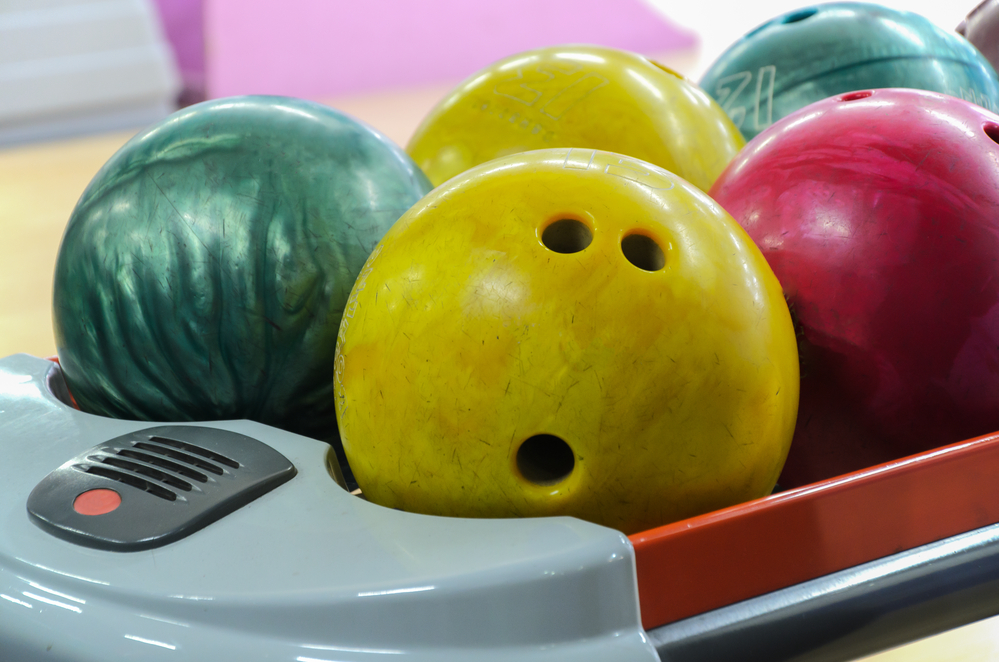
Do You Need Both a Symmetrical and Asymmetrical Ball?
Including both symmetrical and asymmetrical options in your ball arsenal will enable you to address varying lane conditions and refine your strategies. Starting with a symmetrical ball in play from the beginning and eventually introducing an asymmetrical or other ball, is usually the way to go. But it's incredibly important to remember that your bowling journey won't necessarily look like anyone else's.
If you're not yet comfortable with asymmetrical balls, it's perfectly fine to stick with symmetrical options that suit your playing style and skill level. Not all symmetrical balls perform the same way, and a bowling ball's core isn't the sole determinant of its performance. There's the coverstock, the lane condition, your bowling style, and more.
The most important aspect is to find bowling balls that complement your game and allow you to perform at your best. As you gain experience and confidence, you can gradually explore the world of asymmetrical balls and determine if they align with your bowling goals. Remember, it's your unique bowling journey, and finding the right balance between symmetrical and asymmetrical options is about what works best for you.
Consider Your Budget
Before deciding how many more balls to include in your bowling ball lineup, consider your budget. Expanding your bowling ball collection can be a significant financial investment, and it's crucial to assess your budget and priorities. Set a budget that aligns one ball amount with your financial circumstances and bowling goals, ensuring you can get your hands on the bowling balls you want without breaking the bank.
On average, a plastic ball can cost anywhere between $25 and $50. While reactive resins can cost upwards of $150 to $250 or more. Asymmetrical balls tend to be more expensive than symmetrical balls, so keep that in mind.
Frequently Asked Questions
How many bowling balls do you need for the league?

Serious league bowlers and competition players can have 3-5 balls in their arsenal. Competitive players typically have one or two plastic balls for spare shots, and the rest are strike balls.
How often should bowling balls be replaced? What's the lifespan?
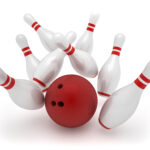
5-10 good years.
When properly maintained, your bowling ball can last five to ten years. The longevity of a bowling ball depends on many factors, such as how often it is used and how well it is cared for.
A good quality bowling ball is an essential piece of equipment for any serious bowler. Not only does it need to be properly sized and weighted for each individual player, but it also needs to be durable enough to withstand repeated use.
How many bowling balls in a set?
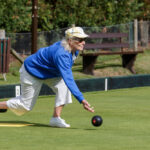
Lawn Bowling plays in groups with four balls in each set.
Several sets have unique characteristics, and their unique symbol is printed on each side in the center circle. Bowling lawn balls have four balls. The second ball could be simply referred to as a bowl or bowl.
Do You Need More Than One Bowling Ball?
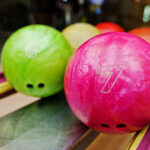
Yes.
You need a couple of bowling balls depending on your personal bowling style and the kind of lane conditions you typically encounter. If you bowl on a lot of different kinds of lane surfaces, having multiple balls can be helpful because each one can be optimally designed for a specific type of lane.
Can You Switch Balls in Bowling?
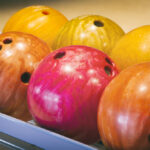
Yes.
You can switch balls in bowling! There's no rule saying you have to use the same ball for an entire game, so feel free to switch it up if you're not getting the results you want with your current ball. Just remember that different balls have different weights and dimensions, so it may take some time to get used to a new ball if you're switching mid-game.
Related Articles
So, there you have it - now you know why bowlers carry different bowling balls and know you should aim for at least 2 bowling balls that suit your needs and align with your budget. And when you feel ready to expand your collection, as long as the balls conform to the standard ball specifications set by the USBC (United States Bowling Congress), including weight, balance holes, gripping/finger hole location, etc.)it's okay to do so. Just remember that it's about quality over quantity.
If you play your cards right, having multiple bowling balls means that you've added valuable tools to your arsenal, and each will be a valuable tool in helping you sharpen your skills in making strike shots. You'll never have to wonder if your bowling arsenal is right.
We hope you found this article to be helpful, and we wish you the best on your bowling journey.
Kira Byrd, a Certified Fraud Examiner, holds a B.S. in Accounting from the University of Alabama at Birmingham. With a passion for bowling from her childhood, Kira has poured her expertise and personal experiences into creating and nurturing Bowling For Beginners. Kira's mission is to meet new bowlers where they are and guide them toward consistently achieving higher scores. With a focus on skill development and strategic techniques, she empowers readers to take control of their game and unlock their true potential.
Bowling For Beginners embodies strict editorial integrity, ensuring reliable and unbiased information. Kira's commitment to delivering valuable insights and practical strategies is reflected in every article. Here's an explanation of our editorial policy and how we get money.





